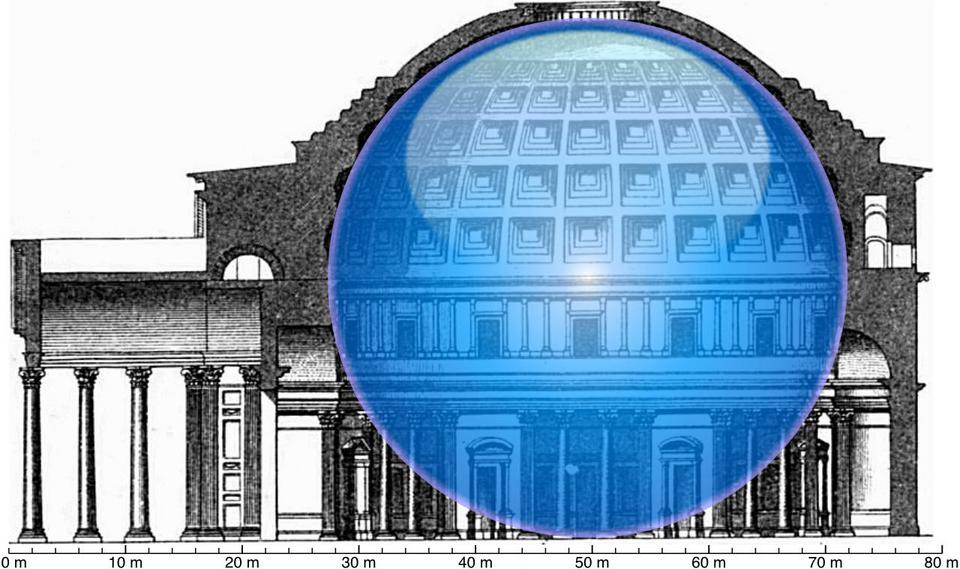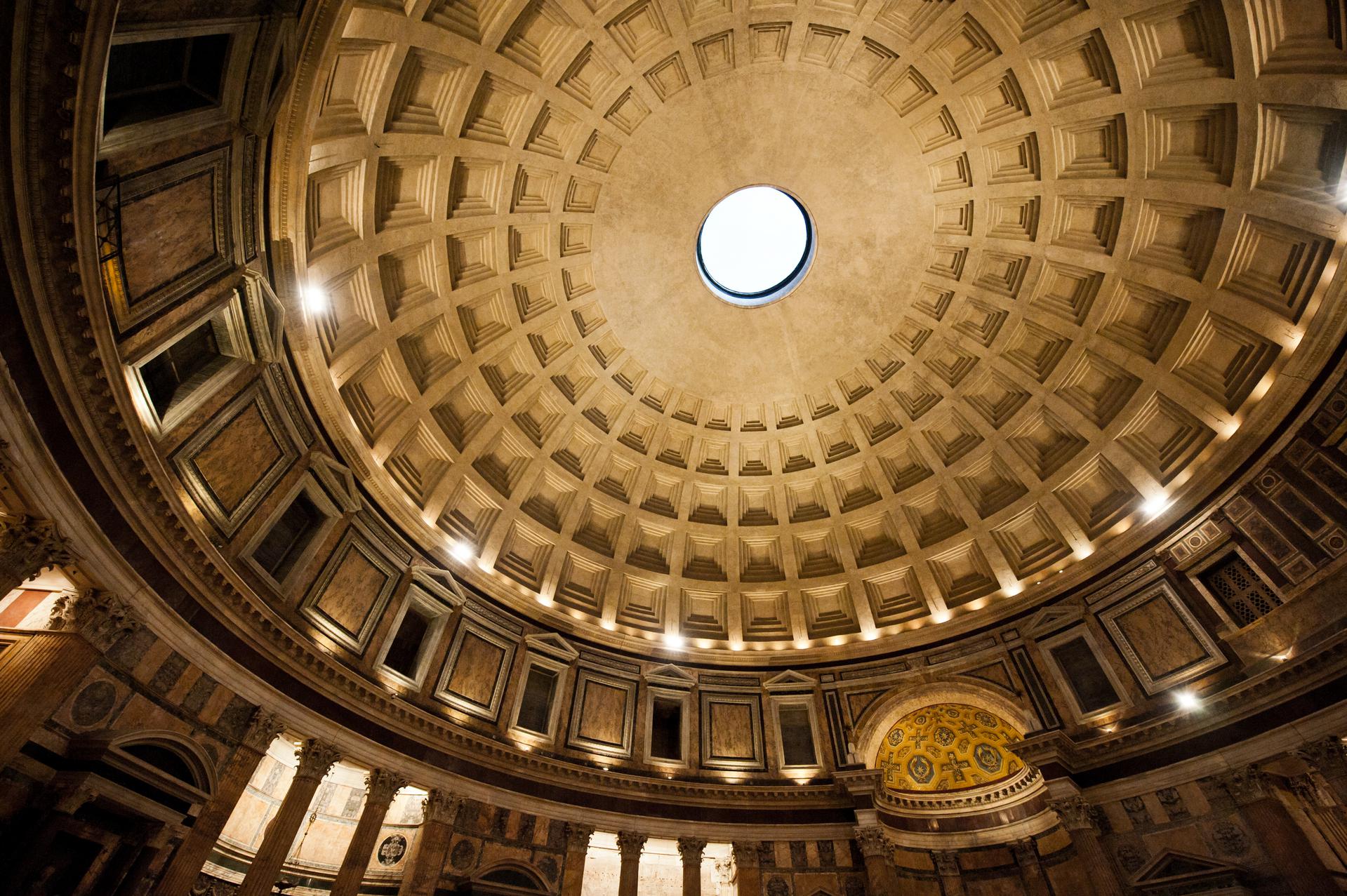Pantheon, Rome, 126 A.D.

The Pantheon in Rome, Italy, is a massive granite and concrete structure visited by millions annually. It is the largest unreinforced concrete dome in the world, the oldest continuously used structure in history, and the best-preserved building of antiquity.

An illustration of how a 142-foot (43 m) diameter sphere fits comfortably inside the Pantheon. This is by design, Emperor Hadrian said it “should reproduce the likeness of the terrestrial globe and of the stellar sphere.”
The Pantheon—Greek for “a temple to all gods”—is a former Roman temple constructed in Rome, Italy, from 113 to 126 A.D. At almost 2,000 years old, it is the oldest, continuously used structure in history. The key to its longevity is a concrete hemispherical dome roof. At 142 feet (43 m) diameter, it was and is the largest unreinforced concrete dome in the world.
When two prior Pantheon temples were destroyed by fire, Emperor Hadrian ensured the replacement would stand the test of time by ordering its construction of granite and concrete. Nobody is certain what the Romans used the temple for during its first nearly 500 years of service, but in 609 A.D. it was changed to a Catholic Church named Santa Maria ad Martyres—Our Lady and the Martyrs. Today, it is the most visited historical site in Italy with over 9 million visitors in 2019.
The structure was unlike any constructed in ancient Rome, yet its design became so iconic that it is the design template for landmarks worldwide from St. Peter’s Basilica at nearby Vatican City to the United States Capitol in Washington D.C.
The building is cylindrical with a portico of large granite Corinthian columns (eight in the first rank and two groups of four behind) under a pediment. A rectangular vestibule links the porch to the rotunda, which is under a coffered concrete dome, with a central opening (oculus) to the sky. The height to the oculus and the diameter of the interior circle are the same, 142 feet (43 m). [Wikipedia: The Pantheon]
The concrete dome is 20 feet (6 m) thick at the base and tapers to 7.5 feet (2.3 m) thick at the oculus. Without materials like rebar to hold the dome in tension, the massive rings of concrete were used to create a buttress-like effect that forces the dome into constant compression. The concrete dome weighs an astounding 5,000 tons (4,535 t).
The Pantheon introduced Western civilization to the dome aesthetic and as a one-piece, monolithic, concrete structure, a direct ancestor to the Monolithic Dome.
